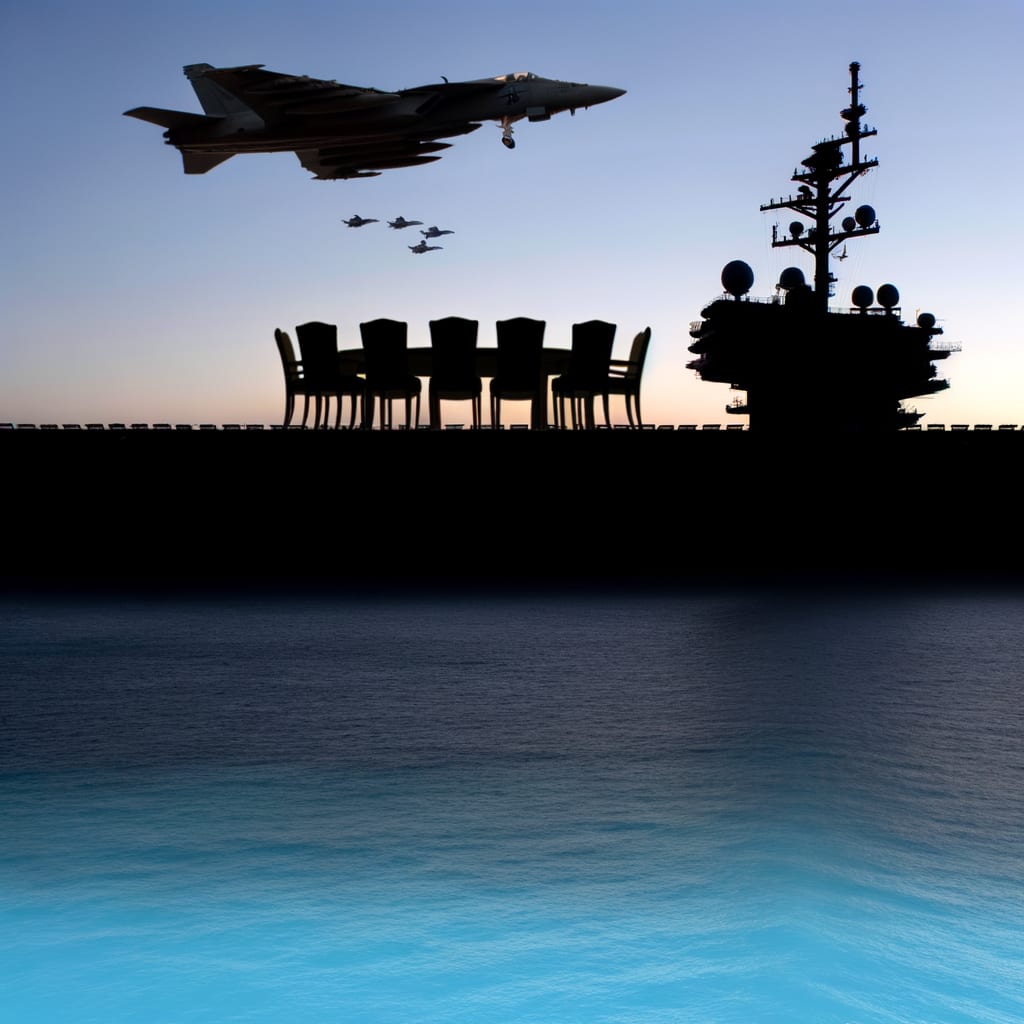Escalating Tensions: U.S. Deploys Largest Aircraft Carrier to Latin America Amid Rising Tensions with Venezuela
In an unprecedented show of military force, the United States has escalated its presence in the Caribbean with the deployment of the world's largest aircraft carrier, the USS Gerald R. Ford, amid rising tensions with Venezuela. The move comes as President Donald Trump continues to ramp up anti-drug-trafficking efforts and increases pressure on the regime of Venezuelan President Nicolas Maduro.
Background and Context
This move marks a significant escalation in the U.S. military presence in the Caribbean, particularly near Venezuelan airspace. The Ford, which is accompanied by a squadron of F-35 stealth fighter jets, MQ-9 drones, and other warships, is recognized as the most advanced aircraft carrier in the U.S. arsenal. Additionally, the U.S. has deployed long-range B-1 bombers, capable of carrying up to 75,000 pounds of guided and unguided munitions, the largest non-nuclear payload of any U.S. Air Force aircraft.
Key Developments
The deployment comes as the U.S. continues to counteract the influence of Russia, China, and Iran in Latin America, according to the Pentagon. The Trump administration has also authorized the Central Intelligence Agency (CIA) to carry out operations in the region, with focus on dismantling Transnational Criminal Organizations (TCOs) and countering narco-terrorism.
In response to this escalation, Venezuela has deployed its military to prevent what it sees as an attempt by the U.S. to install a 'puppet government'. Maduro has accused the U.S. of 'inventing a war', suggesting that the U.S. is hoping to drive him from power under the guise of fighting drug trafficking.
Implications and Reactions
The U.S. has conducted multiple strikes on alleged drug-smuggling vessels in the Caribbean since early September, resulting in the deaths of at least 27 people. These strikes have drawn criticism from other nations in the region, specifically Colombia, who accused the U.S. of violating its maritime territory and killing a fisherman uninvolved in drug trafficking.
In a more aggressive move, Trump has hinted at the possibility of extending military operations from the sea to land. Additionally, Trump has sternly criticized Colombia's far-left president, Gustavo Petro, vowing to cut off all funding to the country over its cocaine production.
Maduro, on the other hand, has declared that Venezuela, together with other South American nations, will resist any attempt at instigating war.
Conclusion
The standoff between the U.S. and Venezuela intensifies as Trump's endgame remains unclear. The significant increase in military presence in the region suggests a hardening stance towards Venezuela, sparking fears of potential military action. As the situation continues to evolve, the international community watches closely, awaiting the next developments in this growing crisis.

